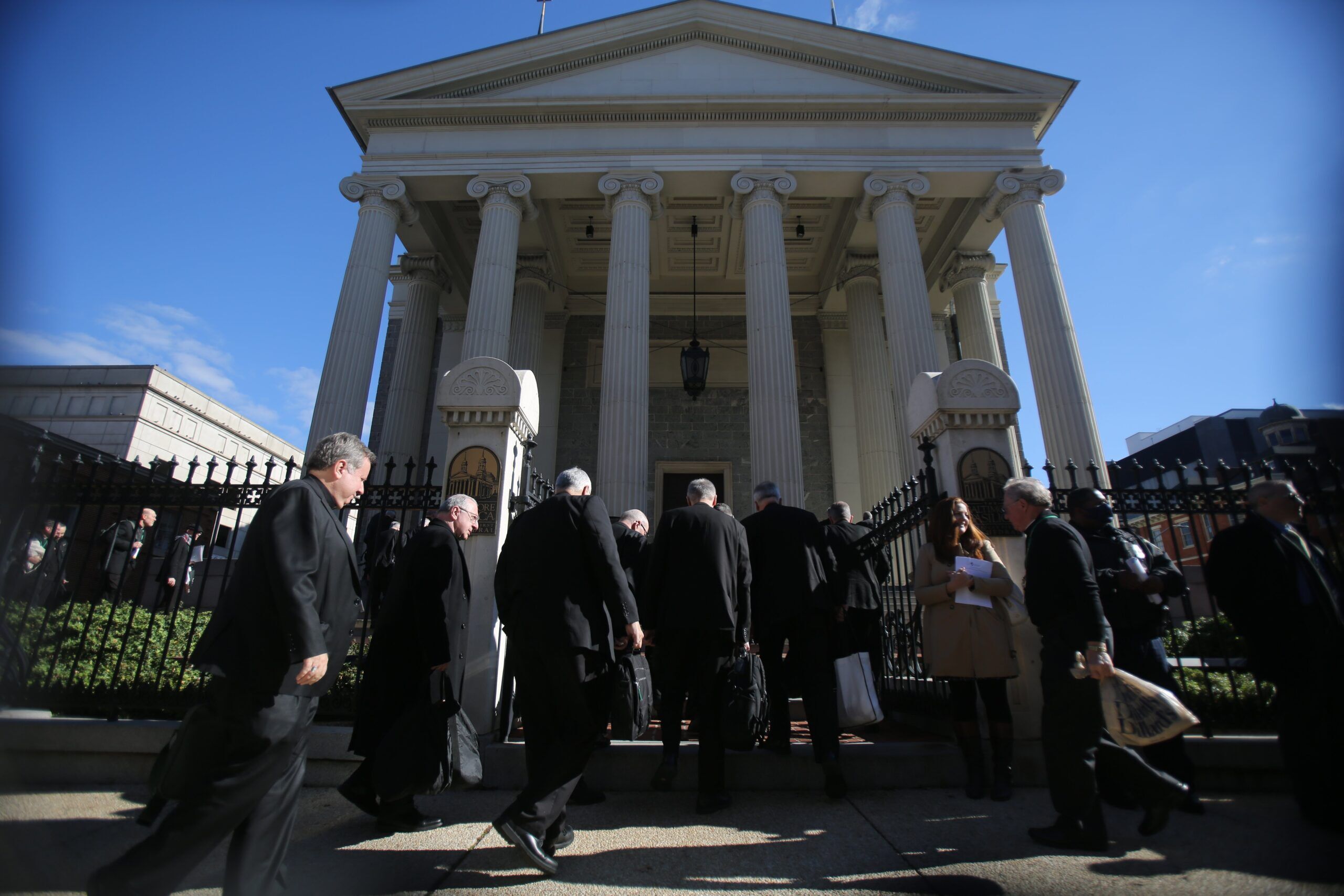Catholics can tune into Bishops’ fall meeting today
The United States Conference of Catholic Bishops (USCCB) is in Baltimore this week for its annual fall meeting where a new president and vice president of the conference will be chosen on Tuesday, Nov. 15. Cardinal Joseph W. Tobin, C.Ss.R. and Bishops Michael Saporito; Gregory J. Studerus, E.V.; Manual A. Cruz, D.D.; and Elias Lorenzo, O.S.B. of the Archdiocese of Newark are in attendance.
The bishops will decide who will replace Archbishop José Gomez of Los Angeles as president and Archbishop Allen H. Vigneron of Detroit as vice president of the USCCB. Both have served out their three-year terms.
Included on this year’s agenda are Synod of Synodality, the Eucharist Revival, the situation in Ukraine, migration, and World Youth Day 2023. Updates are expected on the new Catechism, the Dobbs Decision post-elections, and since it is the 20th anniversary of the Dallas Charter, the procedures in place to address the sexual abuse of minors by clergy.
The USCCB will be live-streaming proceedings here on their website, beginning at 1:30 p.m., Tuesday. Cardinal Tobin and Mark Joseph Williams (clergy abuse survivor, and consultant for the Archdiocese of Newark) will be speaking closer to 4 p.m.
The U.S. bishops have been holding their November plenary session in Baltimore for years, but this year there will be some changes, James Rogers, chief communications officer for the USCCB, told Catholic News Service.
Out are the classroom-style seating, news conferences and the bishops being talked to for hours on end.
In will be a greater emphasis on prayer, “fraternal dialogue” and less formal bishop-media encounters.
“The plenaries are business meetings,” Rogers said, “but they are not just business meetings. The bishops are recognizing that it’s also about discernment, about group discussion, about listening to one another, and about listening to the Holy Spirit.”
As in 2021, this year’s meeting began with prayer, followed by Mass at the Basilica of the National Shrine of the Assumption of the Blessed Virgin Mary in Baltimore. The afternoon will include regional meetings and an executive session. In a new addition, each day of the meeting will end with vespers.
Throughout the plenary, there will also be 24-hour eucharistic adoration, which was instituted at the 2021 meeting.
Rogers said this emphasis on prayer and reflection was “absolutely” inspired by Pope Francis, who had encouraged the bishops to make a retreat together in January 2019 meeting at Mundelein Seminary following the revelations concerning former Cardinal Theodore E. McCarrick.
“Bishop after bishop after leaving Mundelein said, ‘We need to do something like this more often.’ I do think that was a powerful experience for them,’” Rogers said.
Regional meetings are standard fare for the plenaries, but this year’s meeting also will include a time for “fraternal dialogues.” While the bishops have contact year after year with other bishops in their geographic regions, the fraternal dialogues will be randomized, helping to “broaden their sense of community,” Rogers said.
“The opportunity for bishops to connect with one another is fairly rare and fairly precious,” he said. “It’s really about bishops, their ministry and how they can strengthen and support each other in their ministry.”
Once the general, or public, session starts, attendees will see one other change. Instead of the traditional classroom-style seating in parallel rows, the format will include round tables in which the bishops can see each other and more easily see the room and who is speaking.
“The orientation will not just be toward the dais but oriented toward their brother bishops,” Rogers said. He called the structure an experiment, and organizers will be looking for feedback from the bishops on the change.
One final, and perhaps controversial, change will be at least a temporary end to news conferences. Rogers denied claims by some that this means less transparency on the part of the bishops.
This year there will be smaller seating arrangements with three or four reporters meeting with a bishop, creating more of a conversation than what can seem an interrogation.
Rogers described the changes in media access also as an “experiment,” and said he will be looking for feedback both from the bishops and from reporters when the meeting is over.
Reporting by Catholic News Service is included in this article.
Featured image: Bishops arrive for Mass at the Basilica of the National Shrine of the Assumption of the Blessed Virgin Mary Nov. 14, on the first day of the fall general assembly of the U.S. Conference of Catholic Bishops in Baltimore. (CNS photo/Bob Roller)



